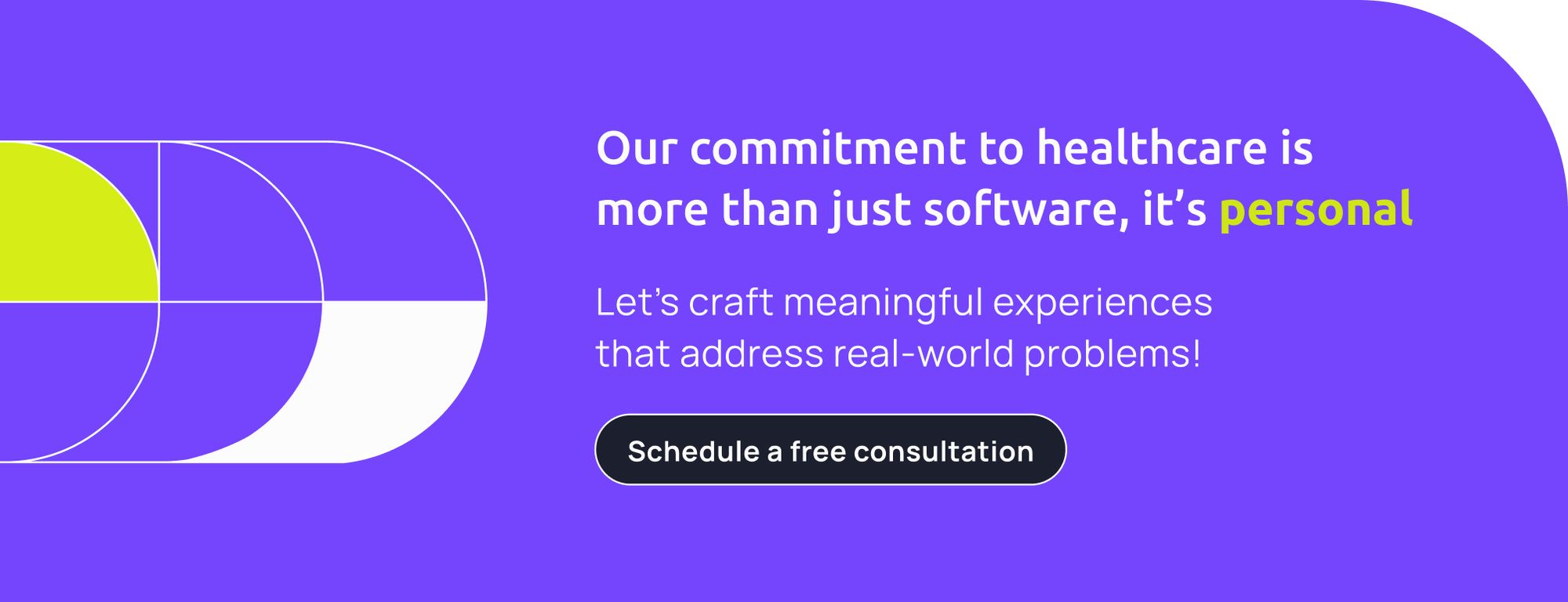UX and digital health have both become hot topics in the past years; still, these two disciplines aren't blending in together as we'd all prefer. UX healthcare can - literally- save lives, and less dramatically speaking, make patients', doctors', and other users' life a little bit easier. This article will go through the main challenges around UX healthcare and the benefits we could reach if the industry embraces these challenges successfully.
What is healthcare UX?
Starting with the basics, healthcare UX is the experience of users when interacting with digital healthcare systems. Healthcare systems are software solutions that support medical tasks, from fitness app to telehealth consultations or EHRs. Healthcare systems involve all kinds of users, such as clinically trained professionals, non-clinical professionals, different patient groups, or third-party companies.
The health sector is one of the more complicated industries regarding UX. Users range all the way from birth to death, patients might be dealing with delicate life situations and emotions, the medical environment is hard to understand, and there are multiple legal and security restrictions.
Still, healthcare UX aims to build thriving experiences that help all users reach their goals effortlessly.
Healthcare is usually perceived as an old-fashioned industry, primarily because change isn't adopted as smoothly as in other sectors. In healthcare, every change should be meticulously evaluated, considering it can impact the health of millions of people. For this reason, the user experience updates in healthcare apps can be stuck.
The pandemic has accelerated the demand for digital health and proven this is the way forward. As more innovation develops, UX healthcare takes a relevant role. It's a critical moment for the digital health industry to understand the unique role of UX and the impact it causes on medical outcomes.

Primary Challenges to Overcome in Healthcare UX
Accessibility
Just like when we design hospitals, we consider wheelchair ramps; when we create a healthcare platform (or any other digital product), we should consider accessibility. We can't forget that 15% of the world's population has a disability, and 8.5% of the world's population are seniors, both very relevant groups of users in healthcare that might have accessibility issues.
How can healthcare UX approach this? With simple navigation, plain language, text size and color options, text-to-speak alternatives, language alternatives, personalization features, among others. Following ADA guidelines can help.
Usability
A usable platform is intuitive: any user should be able to perform their tasks without hesitating. Every digital product has usability challenges, but the problem is even bigger when it comes to healthcare systems. The medical environment tends to be very technical, which complicates user experience for patients (and many times also doctors, nurses, non-clinical professionals, etc). It's important to avoid using medical jargon, keep language and information simple, show data in a friendly way, and design the flows with a user-centric approach to make it intuitive.
Bureaucracy and Regulations
As healthcare is a delicate subject, there are multiple regulations, and guidelines companies are committed to following. Bureaucracy is one of UX Healthcare's worst enemies as these rules limit designers and don't allow them to build 100% user-centric products. At the same time, regulations vary considerably from country to country and even from state to state, which might make consistency and scalability a problem. UX designers need to understand these limitations and examine how to approach them before building the experience.
Legacy Technology
Technology advances every day, but as mentioned in the last title, the healthcare industry has many regulations that don't allow innovation to flow as smoothly as in other sectors. This is why we still encounter a lot of legacy systems. When dealing with outdated software, it's sometimes impossible to build thriving experiences, and the product designers' toolkit is limited. This matter is highly relevant, and healthcare companies need to learn to be more agile while still complying with regulations.
Integrating all Needs
When dealing with healthcare systems, there's a lot to consider. The universe of users is very extensive, and the needs of each user can vary a lot. When building a healthcare experience, it's crucial to truly understand the needs of patients, providers, insurance companies, legal implications, guidelines, integrations with 3rd party systems, and more. A successful UX would blend all these needs together and help everyone achieve their goals.
Conclusion & Final Thoughts
UX Healthcare is a crucial subject in healthcare that allows better accessibility, usability and leverages medical processes. Companies should be fully aware of its benefits and focus on building better digital experiences for their patients and workforce.


